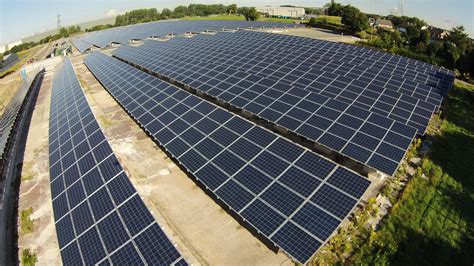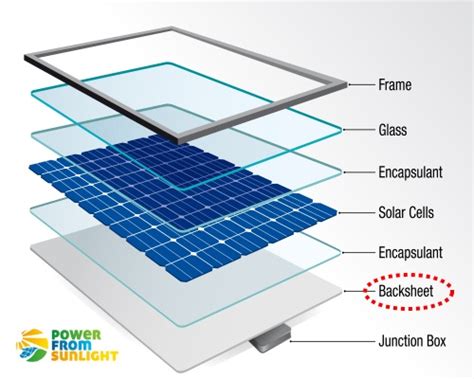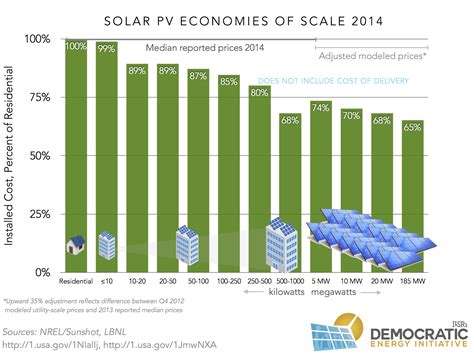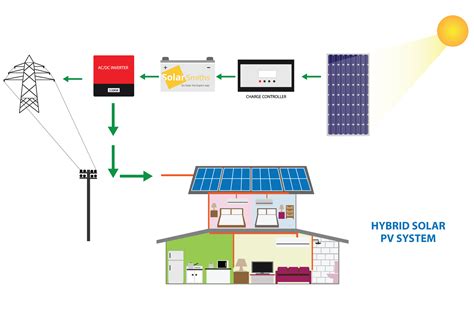The Importance of Government Incentives for Solar Energy Adoption

Solar energy has been gaining popularity as a clean and renewable source of energy that can help reduce our reliance on fossil fuels. However, the high upfront costs of installing solar panels can be a barrier for many homeowners and businesses. This is where government incentives for solar energy adoption play a crucial role in promoting the widespread use of solar energy.
- Types of Government Incentives
- 1. Tax Credits
- 2. Rebates
- 3. Net Metering
- 4. Performance-Based Incentives
- Benefits of Government Incentives for Solar Energy Adoption
- 1. Cost Savings
- 2. Environmental Benefits
- 3. Job Creation
- 4. Energy Independence
- Challenges of Government Incentives for Solar Energy Adoption
- 1. Upfront Costs
- 2. Policy Uncertainty
- 3. Grid Integration
- Conclusion
Types of Government Incentives
1. Tax Credits
One of the most common forms of government incentives for solar energy adoption is tax credits. These credits allow homeowners and businesses to deduct a percentage of the cost of installing solar panels from their federal or state income taxes. This can significantly reduce the upfront costs of going solar and make it more affordable for many people.
2. Rebates
Rebates are another popular form of government incentives for solar energy adoption. These incentives provide homeowners and businesses with a cash rebate for installing solar panels. The amount of the rebate can vary depending on the size of the solar system and other factors, but it can help offset the upfront costs of going solar.
3. Net Metering
Net metering is a policy that allows homeowners and businesses to receive credit for excess electricity produced by their solar panels. This excess electricity is fed back into the grid and the customer receives a credit on their electricity bill. This can help reduce the payback period for solar installations and make them more financially viable.
4. Performance-Based Incentives
Performance-based incentives are another type of government incentive for solar energy adoption. These incentives are based on the performance of the solar system, such as the amount of electricity generated. Customers are paid a certain amount for each kilowatt-hour of electricity produced, incentivizing them to maximize the output of their solar panels.
Benefits of Government Incentives for Solar Energy Adoption
Government incentives for solar energy adoption offer a wide range of benefits, both for individuals and society as a whole. Some of the key benefits include:
1. Cost Savings
2. Environmental Benefits
3. Job Creation
4. Energy Independence
Challenges of Government Incentives for Solar Energy Adoption
While government incentives for solar energy adoption offer numerous benefits, there are also some challenges that need to be addressed. Some of the key challenges include:
1. Upfront Costs
2. Policy Uncertainty
3. Grid Integration
Conclusion
Government incentives for solar energy adoption play a crucial role in promoting the widespread use of solar energy and reducing our reliance on fossil fuels. By offering tax credits, rebates, net metering, and performance-based incentives, governments can help make solar energy more affordable and accessible to homeowners and businesses. While there are challenges to overcome, such as upfront costs, policy uncertainty, and grid integration, the benefits of government incentives for solar energy adoption far outweigh the obstacles. With the right policies and incentives in place, we can accelerate the transition to a clean, renewable energy future powered by the sun.
Learn More :
 The Future of Energy Sustainability: Harnessing Solar Energy
22 February 2024 by Admin
The Future of Energy Sustainability: Harnessing Solar Energy
22 February 2024 by Admin
As the world continues to face challenges in meeting energy demands while also reducing carbon emissions, the focus has turned to renewable energy sources. Among these sources, solar energy stands out...
 The Basics of Solar Energy
22 February 2024 by Admin
The Basics of Solar Energy
22 February 2024 by Admin
Solar energy is a renewable source of energy that is derived from the sun's rays. It is becoming increasingly popular as countries around the world strive to reduce their reliance on fossil fuels and ...
 The Importance of Solar Energy Conversion Efficiency
22 February 2024 by Admin
The Importance of Solar Energy Conversion Efficiency
22 February 2024 by Admin
Solar energy is a renewable and abundant source of energy that has the potential to meet a significant portion of our energy needs. With advancements in technology, solar energy has become more afford...
 The Role of Solar Energy in Space Exploration
22 February 2024 by Admin
The Role of Solar Energy in Space Exploration
22 February 2024 by Admin
Solar energy has played a crucial role in the advancements of space exploration. Since the beginning of space travel, solar power has been utilized to fuel spacecrafts, power rovers on other planets, ...
 The Rise of Solar Farms: Large-Scale Solar Power Generation
22 February 2024 by Admin
The Rise of Solar Farms: Large-Scale Solar Power Generation
22 February 2024 by Admin
Solar power has gained significant traction in recent years as a clean, renewable energy source that has the potential to revolutionize the way we generate electricity. Solar farms, also known as sola...
 The Impact of Solar Energy on Job Creation
22 February 2024 by Admin
The Impact of Solar Energy on Job Creation
22 February 2024 by Admin
Solar energy has become a major player in the renewable energy sector, with more and more countries turning to solar power as a sustainable and clean energy source. In addition to its environmental be...
 Challenges and Solutions in Solar Energy Implementation
22 February 2024 by Admin
Challenges and Solutions in Solar Energy Implementation
22 February 2024 by Admin
Solar energy is a renewable source of energy that has gained popularity in recent years due to its environmental benefits and decreasing costs. However, there are still challenges that need to be over...
 Solar Energy Storage Solutions
22 February 2024 by Admin
Solar Energy Storage Solutions
22 February 2024 by Admin
Solar energy has become an increasingly popular renewable energy source in recent years. As technology continues to advance, more and more homeowners and businesses are turning to solar panels to powe...
 The Role of Solar Energy in Climate Change Mitigation
22 February 2024 by Admin
The Role of Solar Energy in Climate Change Mitigation
22 February 2024 by Admin
Climate change is one of the most pressing issues of our time, with the potential to greatly impact the future of our planet. As global temperatures rise and extreme weather events become more common,...
![Environmental Impact of Solar Energy [Positive/Negative]](/image/blogseasourcedatacom/the-environmental-impact-of-solar-energy.jpg) The Environmental Impact of Solar Energy
22 February 2024 by Admin
The Environmental Impact of Solar Energy
22 February 2024 by Admin
Solar energy is a renewable source of power that has gained popularity in recent years due to its numerous benefits, including reducing reliance on fossil fuels and decreasing greenhouse gas emissions...
 The Role of Solar Energy in Commercial and Industrial Sectors
22 February 2024 by Admin
The Role of Solar Energy in Commercial and Industrial Sectors
22 February 2024 by Admin
Solar energy has become an increasingly popular source of renewable energy in recent years, particularly in the commercial and industrial sectors. With advancements in technology and decreasing costs,...
 The Application of Solar Energy in Residential Settings
22 February 2024 by Admin
The Application of Solar Energy in Residential Settings
22 February 2024 by Admin
Solar energy is a renewable source of energy that has gained popularity in recent years due to its numerous benefits, including its low environmental impact and potential cost savings. In residential ...
 Photovoltaic Technology: How Solar Cells Work
22 February 2024 by Admin
Photovoltaic Technology: How Solar Cells Work
22 February 2024 by Admin
Photovoltaic technology, also known as solar cell technology, is a renewable energy source that converts sunlight into electricity. Solar cells are made of materials that exhibit the photovoltaic effe...
 The Components and Construction of Solar Panels
22 February 2024 by Admin
The Components and Construction of Solar Panels
22 February 2024 by Admin
Solar panels are an essential part of renewable energy systems, converting sunlight into electricity. Understanding the components and construction of solar panels is crucial for anyone looking to inv...
 The Economics of Solar Power Costs and Benefits
22 February 2024 by Admin
The Economics of Solar Power Costs and Benefits
22 February 2024 by Admin
As the world continues to face pressing environmental challenges, the need for renewable energy sources has become more urgent than ever. Solar power, in particular, has emerged as a promising alterna...
 Types of Solar Power Systems
22 February 2024 by Admin
Types of Solar Power Systems
22 February 2024 by Admin
Solar power systems are becoming increasingly popular as a renewable energy source. There are several different types of solar power systems available, each with their own unique features and benefits...
 Solar Power in Developing Countries
22 February 2024 by Admin
Solar Power in Developing Countries
22 February 2024 by Admin
Solar power, also known as solar energy, has become an increasingly popular source of renewable energy in developing countries. With the advancement of technology and the decreasing costs of solar pan...
 Advancements in Solar Technology
22 February 2024 by Admin
Advancements in Solar Technology
22 February 2024 by Admin
Solar technology has come a long way in recent years, with new advancements being made constantly to improve efficiency, affordability, and accessibility. From advancements in solar panel technology t...
 Harnessing the Power of the Sun: A Sustainable Energy Solution
22 February 2024 by Admin
Harnessing the Power of the Sun: A Sustainable Energy Solution
22 February 2024 by Admin
The sun has long been a powerful source of energy for our planet. From providing warmth and light to supporting the growth of plants through photosynthesis, the sun plays a crucial role in sustaining ...